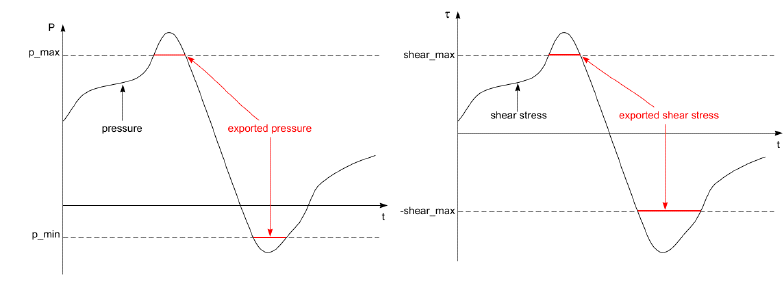Exported Traction Field Controls
Mechanical co-simulations can exhibit numerical instabilities due to high inertia of added-mass, high compliance of the structure, mismatch in the initial conditions, or other sources. In such cases, adjust the exported traction fields by settings the .
- Pressure Ramping Time Scale
- Sets the time scale for the pressure ramping time parameters. The available options are:
- Pressure Ramping Parameters
- Progressively increases the pressure component of the traction load that is exported to Abaqus. Ramping the pressure loads is particularly useful at the start of a co-simulation, where the structure is initially unloaded and an initial flow field in the fluid was calculated in a standalone analysis with a rigid structure.
- Traction Clipping Parameters
- Allows you to limit the traction loads in the fluid domain to reflect the actual operating conditions. The traction clipping parameters are specified as
[p_max, p_min, shear_max], where
p_max and
p_min are the maximum and minimum values for the exported pressures, and
shear_max is the maximum shear stress magnitude. These values are constant throughout the co-simulation. When setting the pressure parameters
p_max must be greater than
p_min and both values can be negative. For
shear_max, the direction of the vector is kept the same and just the magnitude is clipped, as shown in the following.

An example of when these limiting values are useful is in simulating multiphase flow of gas and liquid in a pressurized tank. Consider a case where the known peak operating pressure in the tank is 70 bar. Rather than export a computed pressure that is potentially unrealistic or can result in an unstable co-simulation (especially in the early stages of the co-simulation), you can enforce the peak operating pressure (p_max).
- Apply Traction Field Multiplier
- When activated, Simcenter STAR-CCM+ applies the traction field multiplier that you specify for the Traction Field Multiplier property.
- Traction Field Multiplier
- Specifies a scalar field function to be multiplied with the traction field before export to Abaqus.
